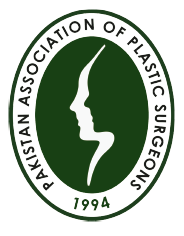HEMI-FACIAL MICROSOMIA
Hemifacial microsomia is a condition in which half of one side of the face is underdeveloped and does not grow normally. It is also called craniofacial microsomia. The condition is sometimes confused with Goldenhar syndrome, a rare congenital condition.
There are a variety of deformities associated with HFM involving different parts of face in varying degree of severity and some areas may not be affected at all. In 10 to 15 percent of cases, both sides of the face are affected, oftentimes asymmetrically.
Commonly involved areas of face are;
- Orbit/Eye
- Jaws/mandible
- Ear (external & middle)
- Some of cranial nerves
- Side of the skull
- Cheek
- Teeth
Management of Hemifacial microsomia needs a collaborative team approach which includes plastic surgeons, maxillofacial surgeons and dentists and orthodontists, anesthetists and pediatricians.
Newborn is initially evaluated for urgent problems and the managed with team collaboration
In severe form neonates may require urgent tracheostomy for breathing problems and surgery for eye support in case of exposure.
Definitive surgical intervention is divided into different age groups ranging from soft tissue reconstruction of lip, cheek, reconstruction of ear and bony reconstruction of mandible and jaw.
FAQ
1. Is a child with HFMD normal?
If there is no associated brain problem, child is normal
2. How is HFM treated?
It is treated in collaboration with other specialties dealing with urgent problems first. Then different surgeries are planned according to the age of the child.
3. What is Goldenhar syndrome?
Goldenhar syndrome is a rare congenital condition resembling Hemi facial microsomia. It is characterized by abnormal development of the eye, ear and spine and lip. It can affect the heart, kidneys, nervous system and lungs.
4. Does hemifacial microsomia get worse with age?
There is no “catch up” growth on the affected side of the face and that these patients always become more deformed with age. The psychological problems also increase with time and progression of the facial deformity. (copied from google)
Written by : Dr. Fahmina
Copyrights: Pakistan association of Plastic Surgeons

